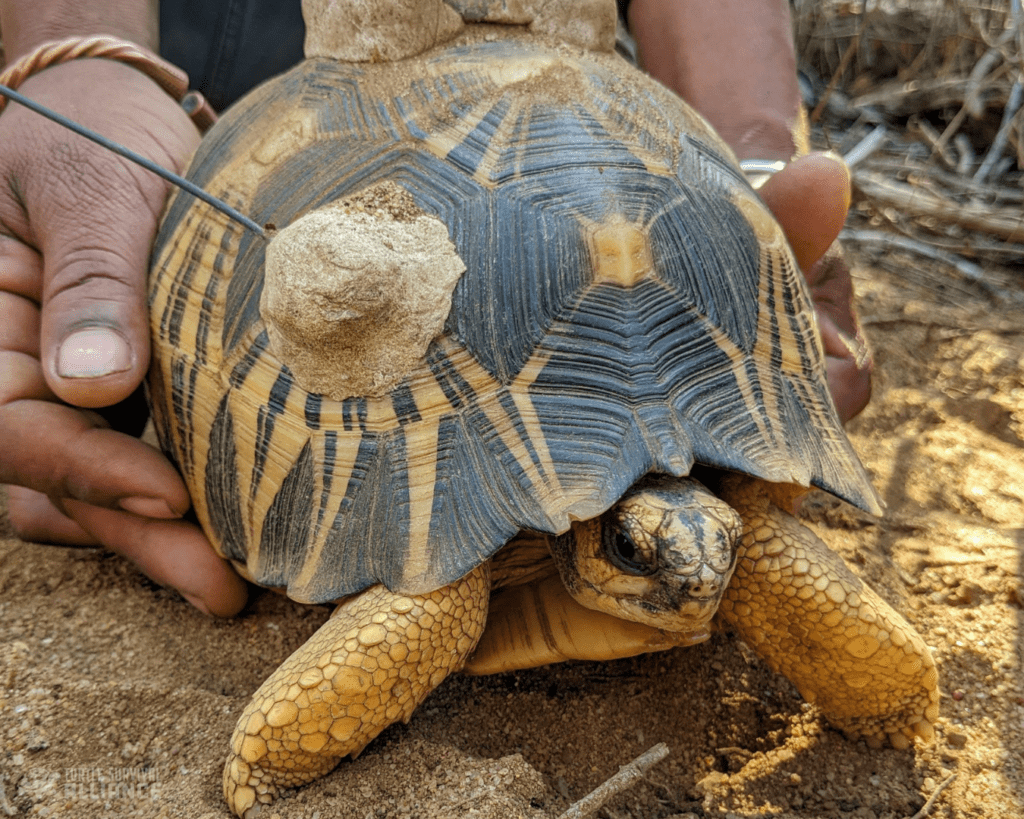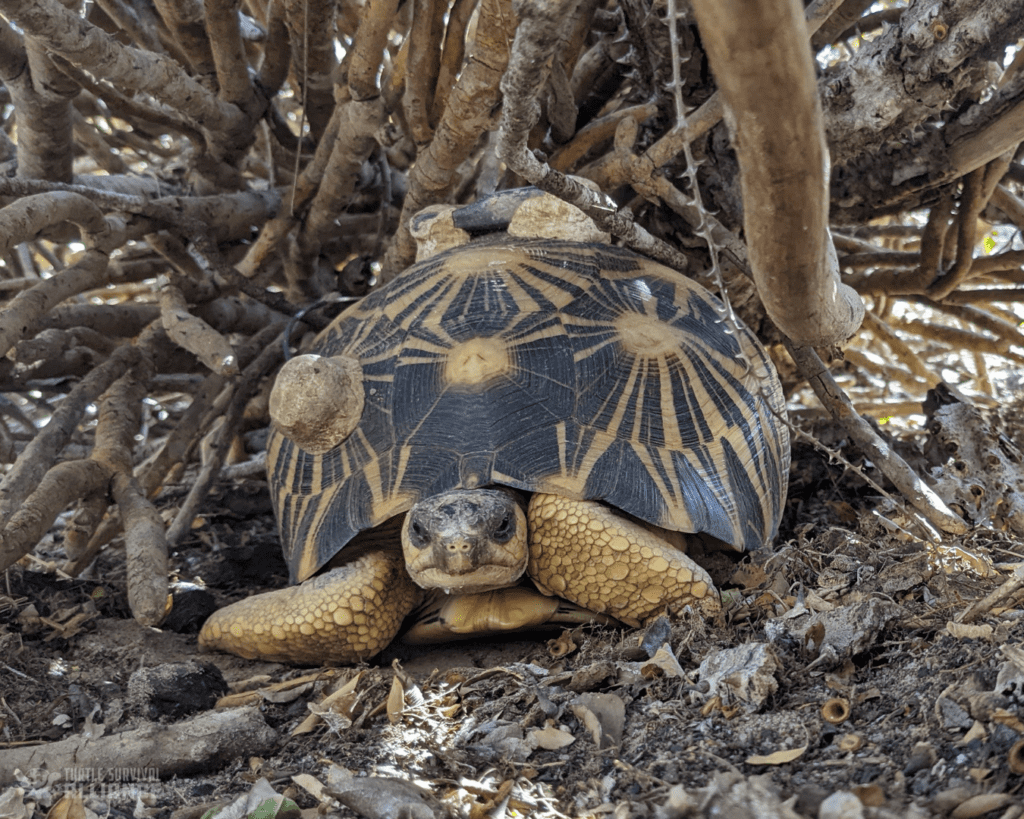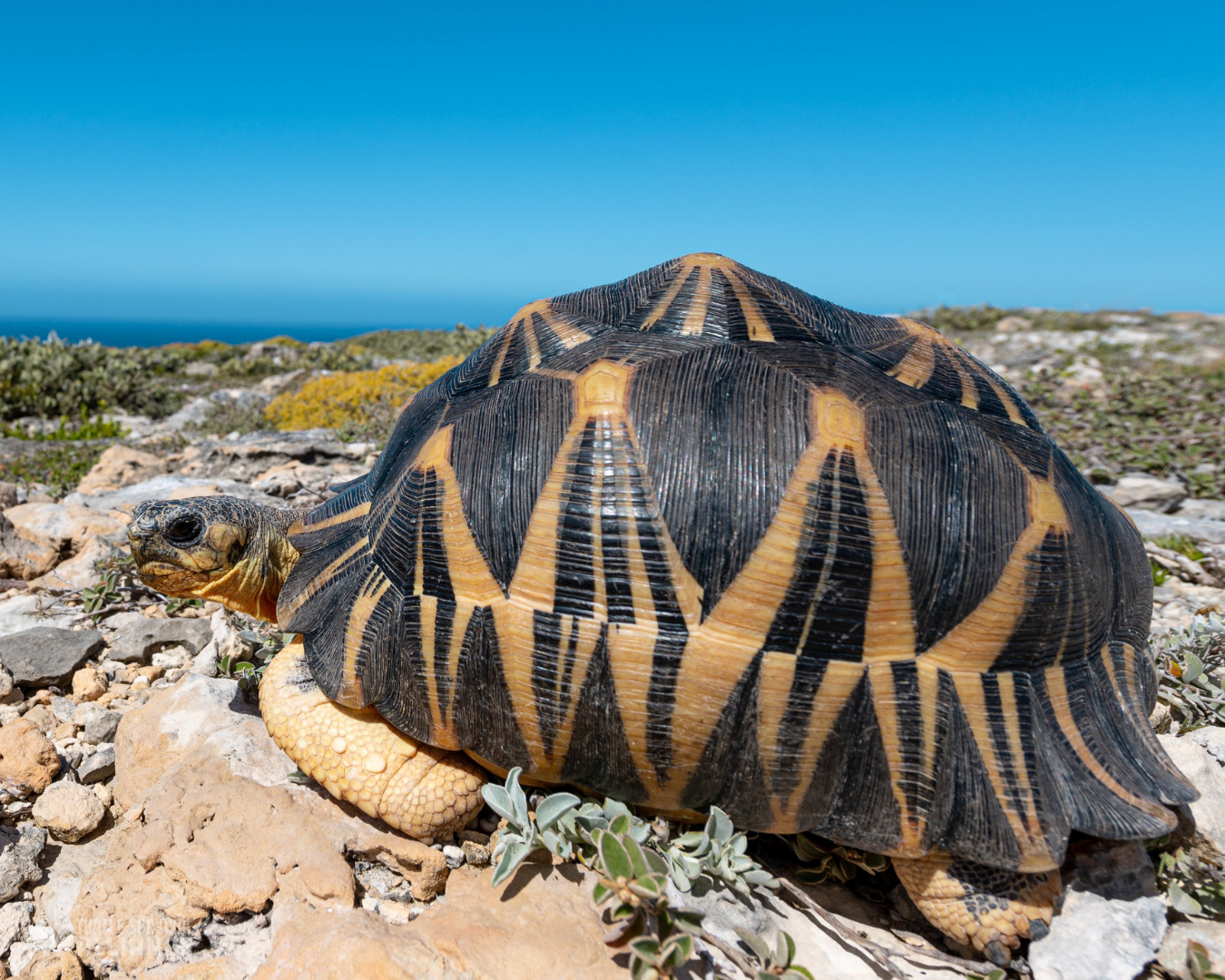An Iconic Malagasy Species: The Radiated Tortoise
The Radiated Tortoise gets its name from the yellow lines radiating out from a central point on each scute on its carapace (shell). This species is primarily an herbivorous grazer and forager, feeding on grasses, flowers, fruits, invasive Opuntia cacti, as well as dried leaves when soft vegetation is unavailable.
A long-lived species, the Radiated Tortoise is known to live well past the century mark, with the oldest known specimen, a female named Tu’I Malila, having lived to 188 years old! Males average 40 cm (16 in) in length, Females average 36 cm (14 in). **The largest specimen we currently know of is a 24 kg (52 lb) female that currently resides at our facility in Tana after having been a long-term captive at the US Embassy there.

Madagascar’s Radiated Tortoise (Astrochelys radiata), was once one of the most abundant tortoises on earth, with an estimated historic population of 12 million tortoises. Protected over the years by a strong cultural taboo among the local tribes known as “fady”, sadly this custom has broken down due to an influx of outsiders to the region, placing this tortoise at peril. In recent years this beautiful tortoise has undergone a catastrophic population decline and is now ranked Critically Endangered by the IUCN Red List.
Turtle Survival Alliance and its partners have been on the forefront of combating these threats and preserving this species.
Beginning with a surge of confiscations in 2015, our work with Radiated Tortoises reached a catastrophic peak in 2018, when more than 17,000 tortoises were seized and placed in our care. Now, the Alliance cares for close to 26,000 tortoises at our conservation centers in Madagascar.
With grants from partners like AZA SAFE and Disney Conservation Fund, we were able to launch the first large-scale reintroduction of
Radiated Tortoises in Madagascar in 2020.
We have hope that our rapid response, triage, long-term care, rewilding, and population monitoring, will reverse the decline of this species so that we can see them thriving in the wild once again.

All photos courtesy of Lance Paden.
- Pictured: Radiated Tortoise (Astrochelys radiata)
- Countries of Origin: Madagascar
- Habitat: Dry brush, spiny forest and scrubland, coastal dunes and bluffs
- Wild Population: Decreasing
- IUCN Red List Status: Critically Endangered
- Threats: Habitat destruction; intense collection for the pet trade
